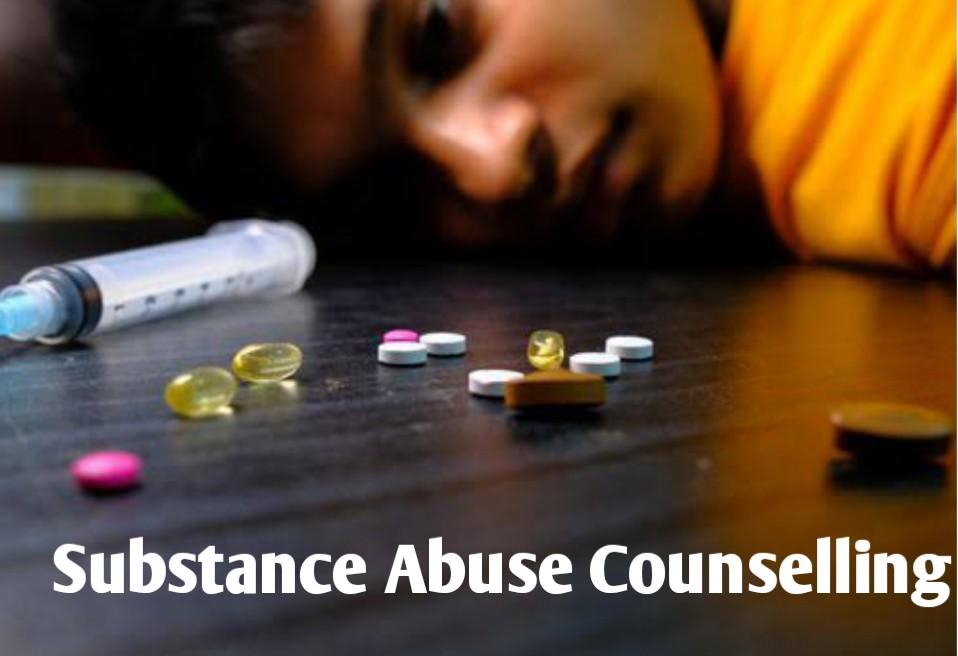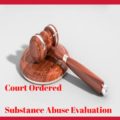This approach integrates psychotherapeutic and coping skills-training techniques with abstinence-based addiction counseling. The primary goals of treatment are to enhance and sustain patient motivation for change, establish and maintain abstinence from all psychoactive drugs, and foster development of (nonchemical) coping and problem solving skills to thwart and ultimately eliminate impulses to “self-medicate” with psychoactive drugs. The approach combines cognitive-behavioral, motivational, and insight-oriented techniques according to each client’s individual needs.
The therapeutic style is empathic, client centered, and flexible. Strong emphasis is placed on developing a good working alliance with the client to prevent premature dropout and as a vehicle for promoting therapeutic change. The counselor attempts to work with and through rather than against a client’s resistance to change. Aggressive confrontation of denial, the hallmark of traditional addiction counseling, is seen as counterproductive and antithetical to this approach. Group and individual counseling are delivered within the context of a structured yet flexible multistage outpatient treatment program that also includes psychoeducation (PE) for both the primary client and his or her family; supervised urine testing to encourage and verify abstinence; and, where indicated, pharmacotherapy for coexisting psychiatric disorders. Patient participation in self-help is encouraged but not mandated, and accepting the identity of addict or alcoholic is not required.
Goals and Objectives of Approach
Enhance the client’s motivation for change.
- Teach the client how to break the addictive cycle and establish total abstinence from all mood-altering drugs.
- Teach the client adaptive coping and problemsolving skills required to maintain abstinence over the long term.
- Support and guide the client through troublespots and setbacks that might otherwise lead to relapse.
Theoretical Rationale/Mechanism of Action
This approach views psychoactive drug addiction as a multidetermined addictive behavior and maladaptive (self-medication) coping style with biological, psychological, and social components. Accordingly, treatment must provide the structure, support, and feedback required to break the behavioral cycle of compulsive psychoactive drug use and provide opportunities to learn adaptive (nonchemical) problemsolving skills to prevent relapse.
Agent of Change
This approach actively promotes the development of a strong therapeutic alliance between client and counselor along with positive bonding among clients within a group. To ensure continuity of care, each client receives both group and individual therapy from the same counselor.
Conception of Drug Abuse/Addiction, Causative Factors
Drug addiction is seen as a multidetermined addictive behavior and maladaptive (self-medication) coping style with biological, psychological, and social components. Although initial exposure to psychoactive drugs may have resulted largely from social and cultural factors (including peer pressure), the driving force behind continued and repeated use of these drugs (before pharmacological and physiological addiction set in) is an attempt to qualitatively and quantitatively alter one’s experience and internal feeling states. Psychoactive drugs are used by certain (predisposed) individuals to amplify, modulate, obliterate, or transform certain feelings in ways they have been unable to achieve by other (nonchemical) means.
Contrast to Other Counseling Approaches
Most Similar Counseling Approaches
This approach contains many original elements (Washton 1989) and incorporates features of other approaches, including motivational counseling techniques described by Miller and Rollnick (1991), relapse prevention (RP) strategies described by Marlatt and Gordon (1985), and psychodynamic techniques described by Brehm and Khantzian (1992).
Most Dissimilar Counseling Approaches
The hallmarks of this approach are clinical flexibility and careful attention to individual differences. As such, it contrasts sharply with aggressive confrontational approaches commonly found in traditional treatment programs. Participation in Alcoholics Anonymous (AA) or other self-help programs is actively encouraged and is seen as helpful and highly desirable, but it is not mandatory.
Format
Treatment involves a combination of group therapy two to four times a week supplemented by individual counseling once a week. A supervised urine sample is taken from every client at least twice a week, and breathalyzer tests are administered on a random basis throughout the program. Although group therapy is the core treatment modality for most clients, those who refuse to enter group therapy are given the option of individual counseling two to three times a week. Many of these clients subsequently agree to enter group therapy once they have formed a positive relationship with their individual counselor and worked through their initial concerns about participating in a group. Some clients are not able to tolerate group as a result of psychiatric and/or interpersonal impairments. Treatment for these clients may consist of individual therapy two to three times a week, including urine and breathalyzer testing.
Modalities of Treatment
Group and individual counseling are delivered within the context of a structured yet flexible multistage outpatient treatment program that also includes PE for both the primary client and his or her family; supervised urine testing to encourage and verify abstinence; and, where indicated, pharmacotherapy for coexisting psychiatric disorders.
Ideal Treatment Setting
This approach was developed within an outpatient treatment setting and as such recognizes that the client is continuously faced with the pressures and stressors of daily life and with easy access to a wide variety of psychoactive drugs. It also recognizes that in the outpatient setting the client is always free to drop out of treatment; accordingly, strong emphasis is placed on therapeutic engagement and retention strategies, particularly at the beginning of treatment when outpatient dropout rates are highest.
Duration of Treatment
A distinguishing feature of this program is its variable-length format. The length of a client’s participation in the program from admission through completion ranges from 12 weeks to 24?weeks as determined by objective measures of clinical progress (i.e., providing clean urines, attending scheduled sessions, developing a sober support network that includes involvement in self-help, and exercising adaptive [nondrug] problem solving skills). A pre specified set of behavioral contingencies adjusts the length of treatment according to individual need. The average number of sessions from admission to completion is approximately 40.
Compatibility With Other Treatments
Operating from a basic philosophy of using whatever seems to work best, this approach is naturally compatible with a variety of other treatments. The program has no antimedication bias so long as the medications being offered are clinically appropriate and noneuphorigenic. Where appropriate, naltrexone and disulfiram are utilized to foster RP. Clients with diagnosed psychiatric disorders are treated with psychotropic medication (e.g., antidepressants, antipsychotics) as clinically required. The program does not dispense methadone or other addictive drugs.
Role of Self-Help Programs
The program actively encourages but does not mandate the client’s participation in AA, Cocaine Anonymous (CA), Narcotics Anonymous (NA), or other self-help groups. All clients are given a basic orientation to self-help and what it has to offer that professional treatment does not. They are also given a list of meetings in their community and provided with a buddy (fellow group member) if they feel hesitant or uncomfortable about attending self-help meetings alone. Clients are not threatened with termination from treatment for failure to attend self-help meetings, nor is their reluctance or refusal to attend self-help meetings seen as intractable resistance or denial. The overwhelming majority of clients in the program do, in fact, attend self-help meetings.
Counselor Characteristics And Training
Educational Requirements
A master’s degree in social work, counseling, or psychology is the minimum educational requirement for all clinical staff.
Training, Credentials, and Experience Required
All counselors must have State certification in clinical social work (C.S.W.), clinical psychology (Ph.D.), or addiction counseling (C.A.C.), plus a minimum of 3 years of full-time clinical experience working in an addiction treatment program (preferably an outpatient program).
Counselor’s Recovery Status
The counselor’s status is irrelevant. Counselors are chosen solely on the basis of their demonstrated clinical competence and not on the basis of their recovery status.
Ideal Personal Characteristics of Counselor
Ideally, the counselor should be warm, empathetic, engaging, tolerant, nonjudgmental, and flexible in interacting with clients. The counselor should have a well-developed observing ego and be able to receive and use constructive feedback, particularly with regard to the types of countertransference and control problems likely to arise with highly ambivalent (resistant) clients. The counselor must have excellent verbal communication skills and be capable of defining and implementing appropriate behavioral limits with clients in a consistently therapeutic (nonpunitive) manner.
Counselor’s Behaviors Prescribed
The counselor’s role is to motivate, engage, guide, educate, and retain clients during all phases of the program. Using an array of motivational, client-centered, and problem solving techniques, counselors are expected to:
- Emphasize the client’s strengths rather than weaknesses.
- Join rather than assault (confront) resistance.
- Avoid aggressive confrontation and power struggles.
- Negotiate rather than pontificate treatment goals.
- Emphasize the client’s personal responsibility for change.
Counselor’s Behaviors Proscribed
The counselor is cautioned against being dogmatic and controlling, especially in response to reluctant and resistant clients. It is easy for the counselor to lose sight of the fact that the first and foremost goal of treatment is to engage the client in a friendly, cooperative, positive interaction that increases the client’s willingness to examine and change his or her drug-using behavior. Counselors are taught how to avoid the most common therapeutic blunders and negative countertransferential responses with drug-abusing clients. These include:
- Predicting abject failure and misery if the client does not follow the counselor’s advice.
- Telling the client that what he or she really needs is more drug-related negative consequences to acquire the motivation for change.
- Ignoring discrepancies between the program’s goals and the client’s goals.
- Feeling frustrated and angry at clients who do not fully comply with the program.
- Wanting to impose negative consequences on noncompliant clients (e.g., depriving them of further help by “throwing them out of treatment”) rather than negotiating a change in a treatment plan based on clarification of the client’s ambivalence about change.
Recommended Supervision
The counselor’s job is a demanding one, and clinical supervision is required not only to sharpen clinical skills and ensure consistency in treatment approach but also to provide the counselor with emotional support and encouragement. All counselors receive 1 hour of group supervision and 1 hour of individual supervision each week. Supervisors use statistical reports (computer printouts) to monitor each counselor’s client caseload and work performance. These reports include data on client retention/completion rates, attendance at sessions, urine test results, and goal attainment ratings. Measures of all counselors’ work performance include data on quantity of clinical services provided to clients (i.e., numbers of sessions), responses to positive urine test results and missed sessions, timeliness of followup on clients who drop out or fail to show up for sessions, and counselors’ compliance with chart-noting requirements. Supervisors pay special attention to client dropout rates, since retention is a key factor in determining treatment success. Supervisors occasionally sit in on counselors’ group sessions to directly observe their therapeutic skills in action. Videotaping and audiotaping of sessions (with the client’s written consent) is also used in supervision. In addition to supervisory meetings, there is a daily case conference attended by all counselors for assigning new cases and discussing special problems. Once each month, there is an inservice training session on a specific clinical topic.
CLIENT-COUNSELOR RELATIONSHIP 5.1 What Is the Counselor’s Role?
The counselor serves a multidimensional role as collaborator, teacher, adviser, and change-facilitator.
Who Talks More?
In general, the client talks more. However, the counselor does not hesitate to offer education, advice, and guidance where appropriate.
How Directive Is the Counselor?
The counselor takes an active role, offering specific advice and direction, particularly during the early phases of treatment where immediate behavioral changes are required to establish and maintain abstinence.
Therapeutic Alliance
One of the most important aspects of the therapeutic alliance (TA) approach is the development of a cooperative relationship between client and counselor. Building a positive TA requires the counselor to start where the client is (i.e., to accept and work within the client’s frame of reference). This stands in marked contrast to traditional approaches, which demand that the client submit to the counselor’s (program’s) frame of reference as the starting point of treatment. For example, if the client at first minimizes the seriousness of his or her drug use problem or rejects the idea that it is a problem at all, the counselor refrains from accusing the client of being in denial (a tactic likely to heighten rather than reduce the client’s defensiveness) and instead asks the client to cooperate in a time-limited experiment (usually involving a trial period of abstinence) to assess the nature and extent of his or her involvement with psychoactive drugs. Coerced or mandated clients pose the greatest challenge to getting a TA started. Typically, these clients appear for treatment angry, suspicious, mistrustful, and ready to do battle. Building a relationship under these trying circumstances requires a great deal of clinical finesse on the part of the counselor, who makes every effort to:
- Empathize with the client’s plight and the fact that no one likes to be told what to do.
- Accept without challenge the client’s primary motivation for coming to treatment? to get the coercing agent (e.g., court, employer) “off my [the client’s] back.”
- Compliment the client for facing the realities of the situation by showing up at the session.
- Detach himself or herself as much as possible from the coercing agent and offer to help the client solve the problem or problems that led to the current situation.
Target Populations
Clients Best Suited for?
This treatment is best suited for clients who meet DSM-IV criteria for psychoactive drug addiction and are able to show up for scheduled sessions at an outpatient clinic. The program admits clients who are actively using alcohol and other drugs and those who have already achieved abstinence as inpatients or outpatients. The program treats all types of chemical addiction and cross-addictions irrespective of the client’s drug of choice (e.g., alcohol, cocaine, heroin) and has been used successfully with both adult and adolescent populations (treated separately). Chronically unemployed, dysfunctional clients are treated in separate groups from clients with substantially higher levels of psychosocial functioning. The program is coeducational, but a special women’s group is available for those who prefer to be treated in an all-female environment. A special dual-focus group (separate from the mainstream program) accommodates the special needs of clients with concurrent psychiatric illness.
Clients Poorly Suited for This Counseling Approach
Poorly suited candidates for this approach include clients whose psychosocial functioning is so impaired that they are unable to show up for treatment sessions and those who are actively suicidal, psychotic, or otherwise psychiatrically unstable and in need of more structured, intensive care such as an inpatient or partial hospitalization program.
Assessment
The pretreatment evaluation process begins by asking the client to fill out an extensive self-administered assessment questionnaire (the Washton Institute Intake Evaluation Form) (Washton 1995) immediately prior to a 1-hour, face-to-face clinical interview with the intake counselor. The assessment questionnaire covers the domains of:
- Drug use.
- Motivation and readiness for change.
- Psychiatric history and status.
- Family history.
- Vocational history.
- Criminal history.
- Treatment history.
During the subsequent clinical interview, the counselor seeks to clarify and expand the information already provided by the client on the assessment form. Perhaps more importantly, the counselor makes an active attempt to motivate and engage the client in a therapeutic interaction. Where indicated, the pretreatment evaluation process may require one or more additional sessions and may also include a formal psychiatric assessment. An extremely important aspect of the pretreatment evaluation is assessment of the client’s motivation and readiness for change.
This involves identifying with the client both internal and external factors currently driving him or her to at least explore the possibility of change. It also involves helping the client identify his or her ambivalence about stopping psychoactive drug use by objectively exploring both the positive and negative effects of the use and by defining the client’s treatment goals and to what extent these are consistent with the program’s goals. With regard to treatment goals, some clients want to reduce rather than completely stop using their drug of choice, while others want to give up only the one drug causing them the most obvious problems (e.g., cocaine) but not the drugs they view as relatively innocuous and non problematic (e.g., alcohol and marijuana).
Clients who want to enter an early abstinence group must agree to stop using all psychoactive drugs (total abstinence) for at least a trial period. Clients who do not agree to meet this requirement are offered the option of time-limited individual counseling (up to 6 weeks) to help move them toward accepting trial abstinence as a short-term treatment goal.
During treatment, clinical progress is measured throughout each client’s participation in the program. A computerized office management system stores, analyzes, and reports clinical data on all clients during the course of their participation in the program. These data include:
- Urine test results.
- Attendance at scheduled sessions.
- Counselor ratings of the client’s progress toward achieving specified treatment goals.
- Client’s self-ratings of progress toward achieving treatment goals.
The data are reviewed monthly (or weekly, if needed) to continuously adjust the treatment to individual client needs, provide supervisory feedback to counselors, and improve overall treatment effectiveness.
Followup treatment studies have been conducted on sample populations at 1- to 2-year intervals after treatment. Follow up measures include assessments of:
- Drug use.
- Psychosocial functioning.
- Involvement in self-help.
- Utilization of other treatment resources.
Session Format And Content
Format for a Typical Session
A typical group session in the early abstinence phase of the program begins with each client stating the length of his or her clean and sober time (i.e., how long ago the client last used any psychoactive drugs whatsoever) and what issue he or she wishes to discuss in that session.
Every client is expected to identify at least one issue for discussion at each session. The therapist (group leader) may pull together the issues of two or more group members into a theme for that session or, alternatively, may begin the session with a specific topic as part of a revolving PE sequence. In general, two group sessions per week are devoted to day-to-day concerns and struggles raised by the clients themselves (with appropriate guidance and framing of the discussion supplied by the group leader); one session is devoted to a specific PE or skills-training topic where the counselor presents a brief lecture and guides a focused discussion.
Several Typical Session Topics or Themes
Following is a partial list of topics and themes in the PE sequence (Washton 1989, 1991): tips for quitting; finding your motivation to quit; how serious is your problem? taking a closer look; identifying your high-risk situations; coping with your high-risk situations; dealing with cravings and urges; why total abstinence? is it really necessary to give up everything?; warning signs of relapse; rating your relapse potential? a realistic assessment; tips for handling slips; managing anger and frustration; finding balance in your life; how to have fun without getting high; defining your personal goals; managing problems in your relationships; building your self-esteem; nutrition and personal health; AIDS and other sexually transmitted diseases? how to avoid them; overview of treatment and recovery; how your family can help without hurting?a look at coaddiction.
Session Structure
The purpose of each session is to enhance the client’s motivation for change and improve his or her ability to cope adaptively with the problems of everyday life without reverting to psychoactive drug use. To accomplish this task success-fully, sessions are neither highly structured nor totally unstructured. The PE sessions serve more to stimulate discussion than present material in a didactic manner. The group leader takes an active role in helping each group member relate the lecture topic to his or her own personal situation. The goal is to foster emotional and behavioral change rather than merely supply factual information.
Strategies for Dealing With Common Clinical Problems
Lateness and absenteeism are addressed therapeutically as behavioral manifestations of a client’s ambivalence about change. The importance of clients arriving at sessions on time and attending reliably is emphasized throughout the program, starting with the initial intake interview. Clients are instructed not to come to the clinic within 12 hours of any alcohol or other drug use. If a client arrives showing clear-cut behavioral signs of intoxication (e.g., slurred speech, uncoordinated movements, breath smelling of alcohol), he or she is asked to leave the premises and return the next day. If the client is severely intoxicated, a counselor will try to contact a family member to escort the client home. According to the program’s variable-length treatment protocol, each unexcused absence extends by 2 to 4 weeks the time required for program completion. On the occasion of a third unexcused absence or fifth unexcused lateness, the client is transferred from the early abstinence group to a stabilization group that focuses more intensively on overcoming early obstacles to change.
Strategies for Dealing With Denial, Resistance, or Poor Motivation
Enhancing a client’s motivation for change is an essential part of the counselor’s role in this approach. Labeling a client as being in denial, resistant to change, or poorly motivated is seen as distinctly unhelpful. Problems in complying with the treatment program are framed in terms of the client’s ambivalence, reluctance, and fears about change. The counselor works collaboratively and cooperatively with the client to overcome these obstacles. In the face of noncompliance, the counselor actively seeks to join the client’s resistance and find creative ways around it. This approach recognizes that, especially in the outpatient setting, aggressive confrontation is likely to precipitate dropout from treatment and may nullify efforts to engage and retain clients. It is important to mention that although this approach avoids the use of confrontational tactics, it does not promote a laissez-faire, anything-goes attitude toward client noncompliance. Limit setting and constructive feedback are essential features of the approach that are used in the spirit of enhancing a client’s motivation for change rather than insisting that he or she admit to being an addict in serious denial.
Strategies for Dealing With Crises
In the event of emergencies or crisis situations during nonclinic hours, counselors and supervisors can be paged via a 24-hour telephone answering service. Crises are met with supportive interventions to stabilize the crisis situation and prevent relapse and dropout. The client is provided with frequent individual counseling sessions until the immediate crisis situation is stabilized.
Counselor’s Response to Slips and Relapses
Slips are treated as avoidable mistakes and manifestations of ambivalence. The thoughts, feelings, circumstances, and chain of setup behaviors leading up to the slip are carefully reviewed. The first goal of this debriefing is to help the client recognize and accept the role of personal choice and responsibility in determining drug-using behavior. To decrease the likelihood of further use, an abstinence plan is formulated that incorporates specific decision making, problem solving, and behavioral avoidance strategies. The variable-length treatment protocol stipulates that each slip increases a client’s length of stay in the program by 2 to 4 weeks. On the occasion of a third slip (or sooner if the counselor deems it necessary), the client is transferred to a stabilization group. This group focuses intensively on developing day-by-day (hour-by-hour) behavioral action plans for achieving abstinence. Upon achieving 2 consecutive weeks of total abstinence and perfect attendance in the stabilization group, the client is eligible to return to his or her early abstinence group. In the event of a second slip while in the stabilization group, the client is suspended from group treatment for at least 2 weeks and may be referred for inpatient care. During the suspension, the client may also be given the option of attending the clinic for twice-a-week urine testing and once-a-week individual counseling for a maximum of 4 weeks. If the client achieves 2?consecutive weeks of abstinence during the suspension period, he or she can return to the early abstinence group.
Role of Significant Others In Treatment
Active efforts are made to involve significant others (SOs) in the treatment. All newly admitted clients are encouraged to attend a family program together with their SOs (e.g., partner, family members, best friend). The program consists of a conjoint multiple family group that meets once per week for 12 consecutive weeks. The group provides support, education, and counseling geared toward enhancing family members’ ability to cope adaptively with their loved one’s addiction and teaching them how to break the vicious cycle of enabling and provoking behaviors that perpetuate the problem. Participants learn and practice specific problemsolving and communication skills using guided role-play exercises. Couples and family therapy are also used to deal with problems that require more individualized attention.
REFERENCES
Brehm, N.M., and Khantzian, E.J. A psychodynamic perspective. In: Lowinson, J.H.; Ruiz, P.; Millman, R.B.; and Langrod, J., eds. Substance Abuse: A Comprehensive Textbook. 2d ed. Baltimore: Williams & Wilkins, 1992. pp. 106-117.Marlatt, G.A., and Gordon, J.R. Relapse Prevention: Maintenance Strategies in the Treatment of Addictive Behaviors. New York: Guilford Press, 1985.Miller, W.R., and Rollnick, S. Motivational Interviewing: Preparing People to Change Addictive Behavior. New York: Guilford Press, 1991.Washton, A.M. Cocaine Addiction: Treatment, Recovery, and Relapse Prevention. New York: Norton, 1989.Washton, A.M. Cocaine Recovery Workbooks. Center City, MN: Hazelden Educational Materials, 1991.Washton, A.M., ed. Psychotherapy and Substance Abuse: A Practitioner’s Handbook. New York: Guilford Press, 1995.
AUTHOR
Arnold M. Washton, Ph.D., C.S.A.C.Founding DirectorThe Washton Institute18 East 41st StreetNew York, NY 10017





